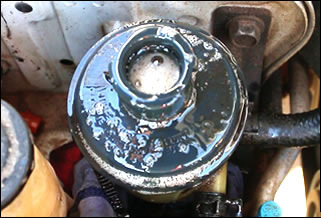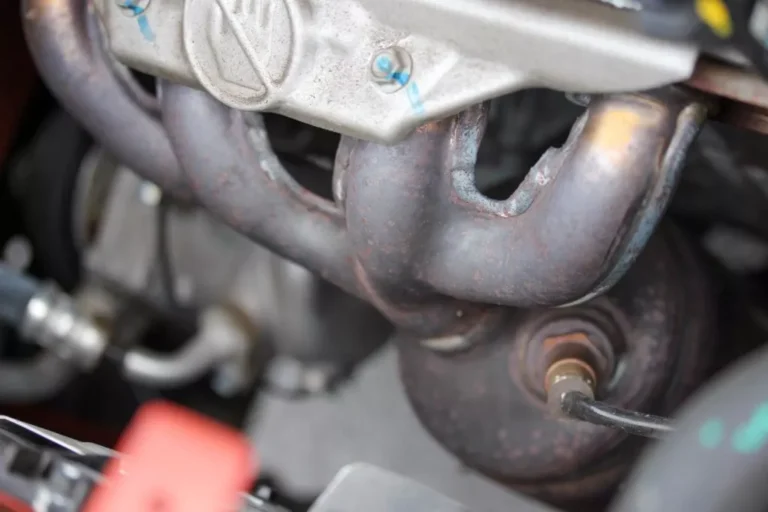Why is My Power Steering Fluid Foamy
Your power steering fluid is foamy due to aeration in the system, which can be caused by low fluid levels or a leak. Foamy fluid reduces the efficiency of your power steering and can lead to damage if not addressed promptly.
To understand why your power steering fluid is foamy, it’s essential to delve deeper into the potential causes and consequences. By identifying the root issue, you can take appropriate steps to resolve the problem and ensure smooth operation of your vehicle.
Let’s explore common reasons for foamy power steering fluid and how you can prevent further complications.
Understanding Foamy Power Steering Fluid
The power steering system in a vehicle is an essential aspect of its steering functionality. The power steering fluid plays a pivotal role in ensuring smooth and seamless steering. However, when the power steering fluid becomes foamy, it can lead to various issues and concerns that car owners should address promptly.
Causes Of Foamy Power Steering Fluid
Improper fluid level: Low fluid levels can result in the intake of air into the system, causing foaming. Contaminants or air: Presence of contaminants or air bubbles in the fluid can lead to foaming. Worn-out seals: Damaged or worn-out seals within the power steering system can result in air being introduced into the fluid, leading to foaming. Overheating: Excessive heat can cause the fluid to foam, often due to a malfunctioning cooling system.
Effects Of Foamy Power Steering Fluid
Reduced steering performance: Foamy power steering fluid can affect the smoothness and responsiveness of steering, leading to potentially dangerous driving conditions. Increased wear: The presence of air in the fluid can lead to increased wear on various components of the power steering system. Noise and vibrations: Foamy fluid can cause unusual noises and vibrations during steering maneuvers.

Credit: m.youtube.com
Signs And Symptoms Of Foamy Power Steering Fluid
When it comes to your car’s power steering system, foamy fluid can be a cause for concern. Understanding the signs and symptoms of foamy power steering fluid is essential for maintaining your vehicle’s performance.
Whining Or Squealing Noise
A whining noise coming from the steering wheel can indicate foamy power steering fluid.
Difficulty In Steering
Difficulty in steering or stiffness in the steering wheel may be a sign of foamy power steering fluid.
Bubbling Or Foaming In The Reservoir
Seeing bubbling or foaming in the power steering fluid reservoir is a clear indicator of an issue.
Fluid Leakage From The Pump Or Hoses
Fluid leakage from the power steering pump or hoses could be a result of foamy power steering fluid.
Common Reasons For Power Steering Fluid Foaming
Power steering fluid foaming can indicate underlying issues in your vehicle’s power steering system.
Low Power Steering Fluid
Insufficient power steering fluid can lead to foaming, causing aeration in the system.
Air In The Power Steering System
Air trapped in the power steering system can cause foaming of the fluid, reducing its effectiveness.
Contaminated Power Steering Fluid
Contaminants such as dirt or debris in the power steering fluid can create foam, impacting performance.
Consequences Of Driving With Foamy Power Steering Fluid
Consequences of driving with foamy power steering fluid can lead to various issues that affect the vehicle’s steering performance, the power steering components, and potential safety hazards. Understanding the repercussions of foamy power steering fluid is crucial for maintaining the functionality and safety of your vehicle.
Reduced Steering Performance
Foamy power steering fluid can compromise the smoothness and responsiveness of steering, causing difficulty in maneuvering the vehicle. This may result in an unstable driving experience, especially during sudden turns or emergency maneuvers, making it essential to address and rectify the foamy fluid issue promptly.
Damage To Power Steering Components
Driving with foamy power steering fluid can lead to excessive wear and tear on the power steering pump and other components. The presence of air bubbles in the fluid can contribute to increased friction and heat, potentially leading to premature wear and failure of the power steering system, necessitating costly repairs and replacements.
Potential Safety Hazards
The presence of foamy power steering fluid poses a safety risk as it can impede the driver’s ability to effectively control the vehicle. Not only can it lead to unpredictable handling, but it can also result in diminished responsiveness to steering inputs, increasing the likelihood of accidents or loss of vehicle control.
Steps To Fix And Prevent Foamy Power Steering Fluid
Foamy power steering fluid is a common issue that can lead to steering problems. To fix and prevent it, check the power steering fluid level, purging air from the system, and replacing worn-out components like the pump or hoses. Regular maintenance and using the manufacturer-recommended fluid can help avoid foaming in the future.
Checking And Refilling Power Steering Fluid
If you find that your power steering fluid is foamy, it is important to take immediate action to fix and prevent any further damage to your vehicle’s power steering system. One of the first steps in this process is to check and refill the power steering fluid. Here’s how you can go about it:
- Locate the power steering fluid reservoir under the hood of your car.
- Remove the cap from the reservoir and inspect the fluid level. Ensure that it is within the recommended range.
- If the fluid level is low, use a funnel to slowly pour in the appropriate power steering fluid, as recommended by your vehicle’s manufacturer.
- Be careful not to overfill the reservoir, as this can lead to foaming and other issues.
- After refilling, securely replace the cap on the reservoir and make sure it is tightly sealed.
Bleeding The Power Steering System
If your power steering fluid remains foamy even after checking and refilling, the next step is to bleed the power steering system. Bleeding helps remove any air bubbles or trapped air within the system that could be causing the foam. Follow these steps to bleed your power steering system:
- Start your car’s engine and let it run for a few minutes to warm up.
- Turn the steering wheel fully to the left and hold it in that position for a few seconds.
- Then, turn the wheel fully to the right and hold it in that position for a few seconds as well.
- Repeat this process several times to ensure all the air is released from the system.
- Check the power steering fluid level again and refill if necessary.
Flushing And Replacing Contaminated Fluid
If the power steering fluid continues to foam, it may be contaminated, which can also contribute to the issue. Flushing and replacing the contaminated fluid can help resolve the problem. Follow these steps to flush and replace the power steering fluid:
- Locate the power steering fluid return line that connects to the power steering reservoir.
- Place a container beneath the return line to catch the old fluid.
- Disconnect the return line and allow the old fluid to drain into the container.
- Once the old fluid is drained, reconnect the return line.
- Refill the power steering reservoir with fresh, recommended power steering fluid.
Regular Maintenance Of The Power Steering System
To prevent foamy power steering fluid from occurring in the future, it is crucial to maintain your vehicle’s power steering system regularly. Follow these tips to keep your system in optimal condition:
- Regularly check the power steering fluid levels and top up when necessary.
- Ensure that the power steering fluid is the recommended type for your vehicle.
- Inspect the power steering system for any leaks or damaged components.
- Follow your vehicle manufacturer’s recommended maintenance schedule for power steering system servicing.
- Address any issues or abnormalities in the power steering system promptly.

Credit: www.youtube.com

Credit: mylittlehomestead.com
Frequently Asked Questions Of Why Is My Power Steering Fluid Foamy
Is It Normal For Power Steering Fluid To Be Foamy?
Foamy power steering fluid is not normal and may indicate a problem with the system. It can be caused by air in the system, a leak, or a failing power steering pump. Have it checked by a professional to prevent damage to the steering components.
How Do You Get Foam Out Of A Power Steering Pump?
To get foam out of a power steering pump, turn off the engine and let the foam settle. Then, refill the reservoir with the correct fluid and bleed the system.
What Does It Mean When Your Power Steering Fluid Is Bubbling?
Bubbling power steering fluid indicates air in the system, causing noise and steering issues. Seek professional help for inspection and repairs.
What Does Bad Power Steering Fluid Look Like?
Bad power steering fluid may appear dark, murky, or contaminated. It could also have a burnt smell and a dirty appearance. Regularly inspecting and changing the power steering fluid is crucial for maintaining the system’s performance.
Why Is My Power Steering Fluid Foamy?
Foamy power steering fluid could indicate air or water contamination, a loose power steering belt, or a failing power steering pump. It’s important to address this issue promptly to prevent further damage to your power steering system.
How Does Air Get Into Power Steering Fluid?
Air can enter the power steering system through leaks in hoses, fittings, or seals. It can also be introduced during fluid changes or when the power steering pump is replaced or serviced.
What Causes Water Contamination In Power Steering Fluid?
Water contamination in power steering fluid can occur due to condensation buildup or coolant leaks into the system. This can lead to foaming and reduced effectiveness of the power steering system.
Conclusion
If you notice foamy power steering fluid, it’s a clear sign of potential issues in your vehicle’s system. Understanding the reasons behind this occurrence can help you take proactive steps to prevent damage and maintain your car’s performance. Regular maintenance and prompt action can save you time and money in the long run.
Keep an eye on your power steering fluid and address any complications promptly.

